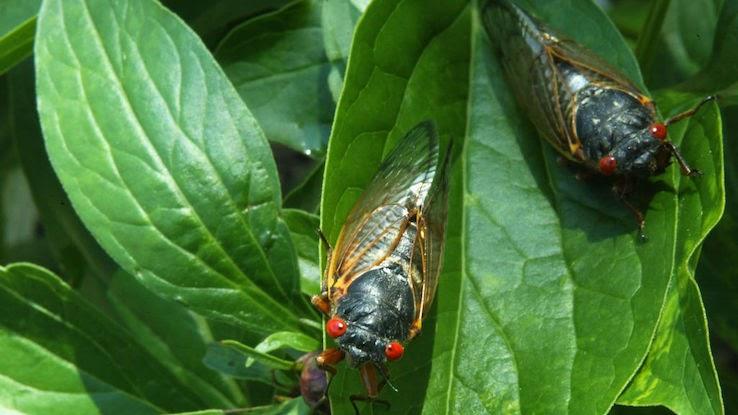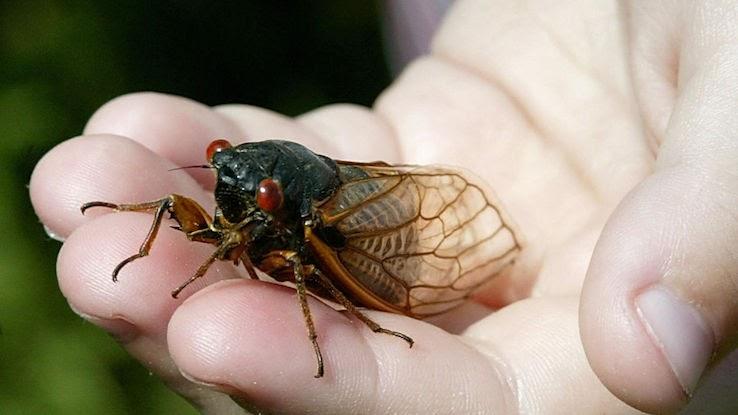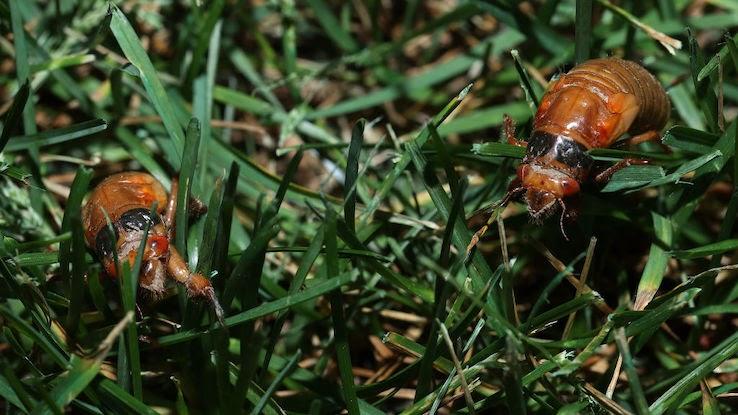Brood X Cicadas Are Here — Find Out Where You Can See Their 17-Year Emergence

Come one, come all several trillion — a cicada show for the ages is currently taking place across the eastern United States, and it’s one you may or may not want to miss. For the past several weeks and for the next few, billions — potentially even trillions — of Brood X cicadas have been emerging from the ground across the East Coast after 17 years of hibernation. This appearance means they’ll mate and end their lives, and the next generation of Brood X cicadas will repeat the cycle again.
It’s a fascinating ecological event, to be sure, and you’re in for a treat if you’ve never seen this natural phenomenon before. Witnessing Brood X’s grand and noisy appearance involves knowing where to look, unless, of course, they’ve been living beneath your backyard — or they make a wild foray into hitchhiking with you. If you’ve been anticipating their arrival at any point during the last 17 years, here’s everything you’ll want to know about these winged wonders.
Cicadas 101: What Are These Bugs, Anyway?

The generation of cicadas that’s in the process of emerging right now all over the eastern U.S. has been slowly reaching maturity in the comfort of underground lairs since 2004. For reference, in 2004, smartphones didn’t exist, and the only people who had access to Facebook were Harvard students. All the while, these cicadas have been preparing for their communal surfacing into the light of day, when they molt into their adult bodies and sing their ear-piercing mating calls. Within a few weeks of mating and laying eggs in soft tree bark, the adult cicadas die off. The new generation hatches, and the young cicadas, called nymphs, retreat to subterranean tunnels to begin the next 17-year growth period.
Before science had much understanding of the strange phenomenon of massive cicada emergence, people thought of these insects as a sort of plague. However, unlike the biblical plague of locusts, when cicadas emerge from the earth they don’t eat plant tissues or destroy crops. They also aren’t very good at flying, so they typically stay within a range of about a few hundred feet during their time above ground.
There are more than 3,000 species of cicadas in the world, yet only periodical cicadas exhibit behavior that involves making en masse above-ground appearances once every 13 or 17 years. Periodical cicadas only exist in the eastern U.S. The 13-year cicadas live in the Mississippi Valley and the Deep South. The 17-year cicadas, whose three species include Magicicada septendecim, M. cassinii and M. septendecula, live farther north. All three form mixed-species groups called broods, and scientists assign Roman numerals to these groups to identify them. There are 12 17-year broods and three 13-year broods that are regularly spotted in the U.S., although early scientists identified others that may or may not still exist.
Periodical cicadas may feel somewhat otherworldly to humans because all members of each of the broods emerge from the ground at the same time every 13 or 17 years — although different broods emerge during different years. Even scientists are amazed by the synchronicity of periodical cicadas. Non-periodical cicadas have much shorter life cycles, between three and five years, and grow at different rates. This means they simply come out of the earth when they’ve reached maturity one by one rather than as a large horde. Periodical cicadas develop underground and stay there for a fixed 13 or 17 years, then arise together with their brood like clockwork.
What Can You Expect to See the Cicadas Do?

Brood X cicadas have already begun to surface and will continue taking flight throughout June. Their 17-year life cycle is mostly spent buried about a foot beneath the soil, biding their time in underground tunnels where they survive on sap from tree roots in the immediate vicinity.
Of the 12 broods of 17-year cicadas that exist, the largest is Brood X. That means people in the Northeastern U.S. are witnessing the most massive cicada emergence that exists in the country. Soil temperature serves as the main trigger for the insects; once things warm up to about 64 degrees Fahrenheit and that heat extends eight inches deep underground, all of the cicadas in the area will begin to rise.
After making their way out of their tunnels — and the structures they build above them, which are affectionately called chimneys — Brood X cicadas, also known as the Great Eastern Brood, climb into the trees to molt into their winged adult forms. After shedding their skins they start to fly around, the males buzzing loudly in search of mates.
Once they find their match, the females lay their eggs in the trees. Within four to six weeks, the eggs hatch, and the offspring, cicadas in larval form, drop to the earth and bury themselves in search of food: tree root sap. All the adult cicadas die shortly after mating, and the cycle of the new generation begins again underground.
Where to See Brood X Cicadas This Summer

Brood X cicadas live in 15 states across the Northeast and Midwest U.S. and Washington, D.C. These include:
- Delaware
- Georgia
- Illinois
- Indiana
- Kentucky
- Maryland
- Michigan
- New Jersey
- New York
- North Carolina
- Ohio
- Pennsylvania
- Tennessee
- Virginia
- West Virginia
Depending on your location, many Brood X cicadas have likely already begun to make an appearance nearby. But just as quickly as they appeared and prolifically as they buzzed, they’ll disappear, with most dying off by mid-July.
According to Gene Kritsky, a periodical cicada expert from Mount St. Joseph University in Cincinnati, the largest swarms of Brood X cicadas are appearing in three areas. The first is a cluster that includes parts of southeastern Pennsylvania, the majority of Maryland, sections of New Jersey and Delaware, and a few parts of New York. The second sector encompasses all of Ohio and Indiana, northern and eastern spots in Kentucky, and some areas in eastern Illinois. The third area where you can expect to catch a good glimpse of a swarm? Western North Carolina, eastern Tennessee, parts of western Tennessee and a few spots in northern Georgia.
Mount St. Joseph University has created a free app called Cicada Safari for both iOS and Android you can use to record Brood X sightings. If you’re serious about your cicada-spotting excursions, you can also record sightings on Cicada Mania and iNaturalist. But be sure to get out there and see what the buzz is all about soon — or be prepared to wait until 2024, when the Brood XIII and Brood XIX cohorts are set to emerge from hibernation.





